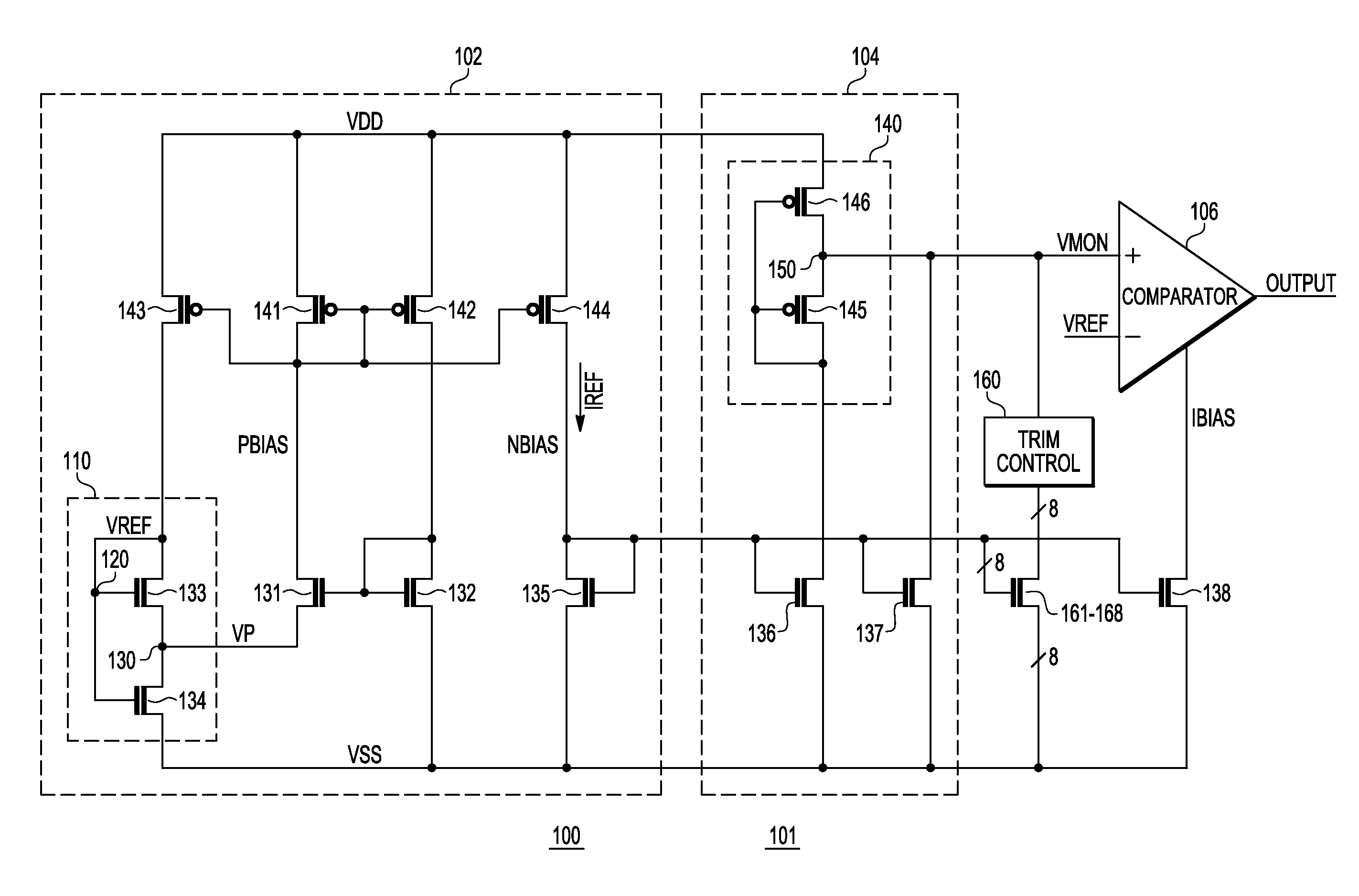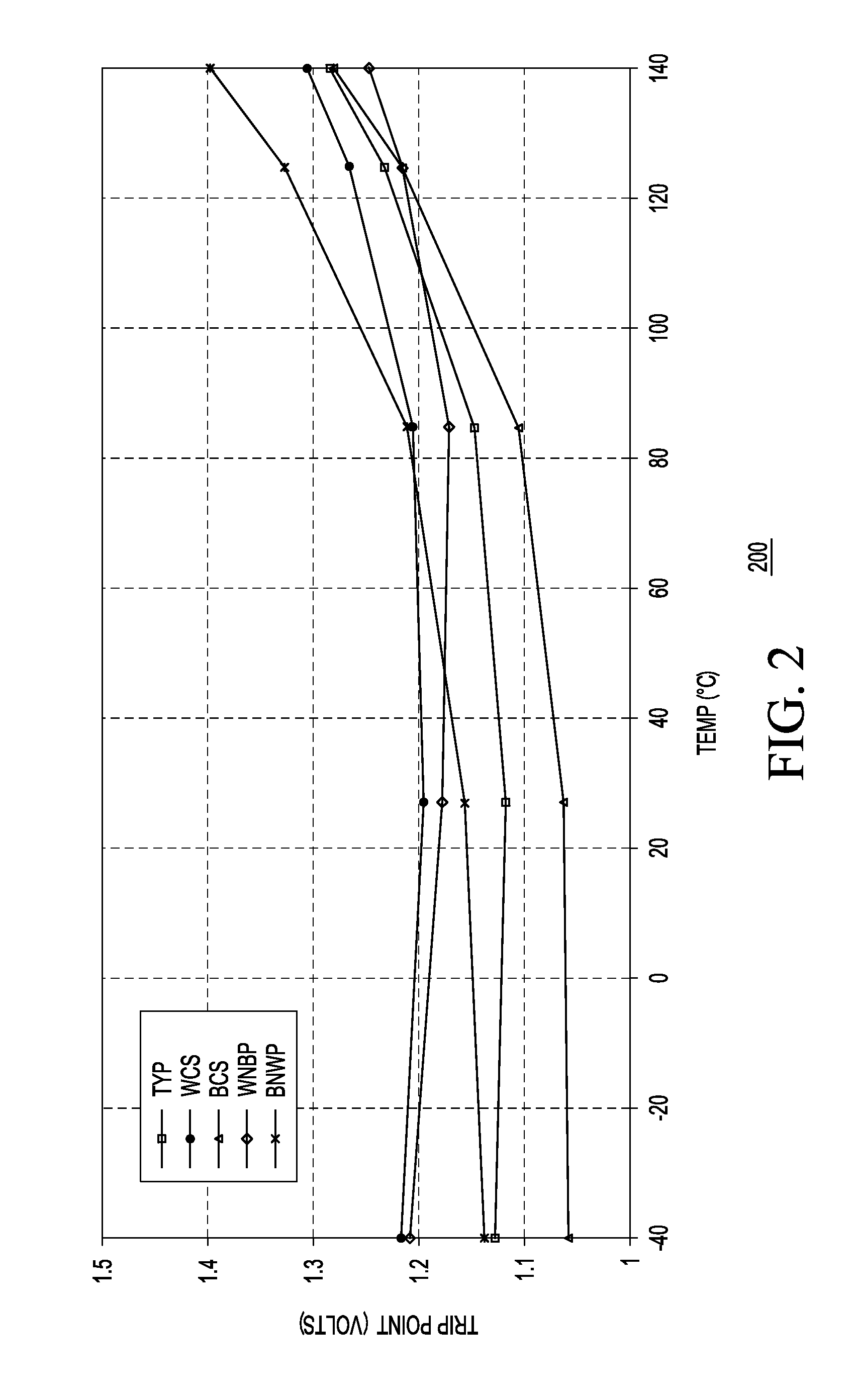Low voltage detector
a detector circuit and low voltage technology, applied in the field of low voltage detector circuits, can solve the problems of mcu consuming maximum power, high power lvd, and consuming an undesired large amount of power,
- Summary
- Abstract
- Description
- Claims
- Application Information
AI Technical Summary
Benefits of technology
Problems solved by technology
Method used
Image
Examples
Embodiment Construction
[0018]FIG. 1 is a schematic of a low power consumption, low voltage detector (LVD) 100 in accordance with one embodiment of the invention, suitable for a microcontroller unit (MCU) and other electronic applications, which delivers a safe operating state even when a minimum power supply voltage specification is violated. The invention allows implementation of a robust LVD 100 that operates with a very low quiescent current during standby mode. In one embodiment, the LVD 100 is disposed on a substrate of an integrated circuit 101. The LVD 100 monitors the power supply voltage VDD of an MCU, and provides a low voltage indication of VDD.
[0019]In one embodiment, the LVD 100 comprises a voltage and current reference circuit 102, a power supply voltage monitor circuit 104, and a low-power voltage comparator 106.
[0020]The voltage and current reference circuit 102 outputs a reference voltage VREF, which is, ideally, a fixed DC voltage that does not change with temperature or changes within a...
PUM
 Login to View More
Login to View More Abstract
Description
Claims
Application Information
 Login to View More
Login to View More - R&D
- Intellectual Property
- Life Sciences
- Materials
- Tech Scout
- Unparalleled Data Quality
- Higher Quality Content
- 60% Fewer Hallucinations
Browse by: Latest US Patents, China's latest patents, Technical Efficacy Thesaurus, Application Domain, Technology Topic, Popular Technical Reports.
© 2025 PatSnap. All rights reserved.Legal|Privacy policy|Modern Slavery Act Transparency Statement|Sitemap|About US| Contact US: help@patsnap.com



